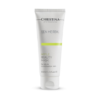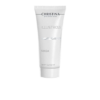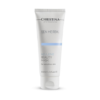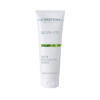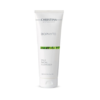
Beautiful skin doesn’t start only with a cream or serum – it starts with what you eat and how you live.
While skincare products can help you manage acne from the outside, your diet and lifestyle work on a much deeper level. The connection between nutrition and skin health has long been proven: what you eat directly affects your hormones, inflammation levels, and even the balance of your gut bacteria – all of which influence your skin.
When your body gets the right nutrients, your skin becomes calmer, more balanced, and radiant. But when your diet is overloaded with sugar, dairy, and processed food, it can lead to hormonal swings and inflammation, often showing up as breakouts.
A healthy lifestyle – nourishing meals, regular movement, good sleep, and less stress – supports your body’s natural ability to cleanse, renew, and glow. Clear skin is not a miracle; it’s a reflection of balance inside and out.
Let’s explore what to eat more of and what to avoid if you want your skin to look fresh and healthy.
What to Eat for Acne-Prone Skin
1. Low-Glycemic Foods
When you eat a lot of refined sugar, pastries, or white bread, your blood sugar rises sharply, causing your body to produce more insulin. High insulin levels can trigger hormonal changes that increase oil production – and more oil often means more acne.
By choosing low-glycemic foods, you keep your blood sugar stable and your skin calmer. It’s been proven that people who eat more whole grains, beans, and vegetables tend to have fewer breakouts.
Choose:
- Whole grains (oats, quinoa, brown rice)
- Beans, lentils, chickpeas
- Non-starchy vegetables (broccoli, spinach, zucchini)
2. Omega-3 Fatty Acids
Healthy fats are essential for clear skin. Omega-3s calm inflammation, help regulate hormones, and keep your skin soft and hydrated from within. They’re especially helpful for reducing redness and sensitivity.
It’s been shown many times that people who include more omega-3s in their diet have smoother skin and fewer breakouts.
Eat more of:
- Salmon, sardines, mackerel
- Flaxseeds, chia seeds
- Walnuts
3. Antioxidant-Rich Fruits and Vegetables
Antioxidants are your skin’s best friends. They fight the damage caused by stress, pollution, and processed food, helping your skin heal faster and look brighter.
Colorful fruits and veggies – especially those rich in vitamins A, C, and E – protect your skin and support collagen production. Simply put: the more color on your plate, the more glow on your face.
Add to your diet:
- Berries, citrus fruits
- Leafy greens (spinach, kale)
- Sweet potatoes, carrots
4. Zinc-Rich Foods
Zinc helps your skin stay balanced and heal faster. It regulates sebum (oil) production and supports your immune system, which helps prevent pimples from becoming inflamed.
It’s no coincidence that people who eat more zinc-rich foods often notice that their skin becomes clearer and calmer over time.
Eat:
- Pumpkin seeds, chickpeas, cashews
- Oysters and seafood
- Whole grains
5. Probiotics for Gut-Skin Connection
A healthy gut means healthy skin. The balance of bacteria in your digestive system affects everything from inflammation to hormone levels.
When your gut flora is out of balance, toxins can build up – and your skin becomes one of the first places to show it. Probiotic-rich foods help restore this balance, reducing breakouts and improving your overall complexion.
Try:
- Yogurt with live cultures
- Kefir, kimchi, sauerkraut
- Kombucha

Foods to Avoid if You Have Acne
1. Dairy Products (Especially Skim Milk)
Dairy can be tricky for acne-prone skin. Milk contains natural hormones that may increase oil production and trigger breakouts in some people. Skim milk is often even worse, as it’s more processed and can contain additional proteins that irritate the skin.
Many people notice visible improvements in their complexion when they cut back on dairy or switch to plant-based alternatives.
Better alternatives:
- Almond, oat, or soy milk
- Dairy-free yogurt
2. High-Sugar Foods and Refined Carbs
Sugar is one of the biggest enemies of clear skin. It causes sharp spikes in insulin and increases inflammation throughout the body. That inflammation often shows up on your face in the form of clogged pores and irritation.
Reducing sweets and refined carbs can dramatically improve your skin tone and texture in just a few weeks.
Avoid:
- Soda, candy, pastries
- Sweetened breakfast cereals
3. Fast Food and Fried Foods
Fast food is high in unhealthy fats and additives that create inflammation. These foods can also change the composition of your skin’s natural oils, making them thicker and more likely to clog pores.
People who eat fast food regularly tend to experience more frequent and severe breakouts — and it’s not just coincidence.
Cut down on:
- French fries, burgers, fried chicken
- Processed snacks like chips
4. Whey Protein Supplements
If you’ve noticed more breakouts since starting protein shakes, the reason might be whey protein. It raises certain hormones that increase oil production and can make acne worse, especially along the jawline and cheeks.
Plant-based protein powders are a gentler, skin-friendly alternative.
Switch to:
- Pea, hemp, or brown rice protein powder
Lifestyle Habits That Support Clear Skin
A healthy diet works best when it’s supported by an equally healthy lifestyle. Your skin reflects how you live – and consistency is key. Glowing, balanced skin isn’t about perfection; it’s about daily habits that support your body’s natural rhythm.
Routine and rhythm matter.
Your skin thrives when your body feels safe, rested, and predictable. Going to bed and waking up at roughly the same time helps your hormones stay balanced. Late nights, stress, and lack of sleep disrupt your body’s repair cycle – and your skin often shows the first signs of exhaustion.
Getting 7–9 hours of quality sleep every night allows your skin to renew and heal, reducing redness, puffiness, and dullness.
Movement is medicine.
Regular physical activity improves blood circulation, delivers more oxygen to your skin cells, and helps your body detoxify naturally through sweat. You don’t need intense workouts – even daily walks, yoga, or dancing can make a visible difference. Moving your body regularly also lowers stress levels, which helps prevent hormonal breakouts.
Stay hydrated.
Water is one of the simplest and most powerful skincare tools. Hydration supports every cell in your body and helps flush out toxins.
When you’re dehydrated, your skin can become dry, flaky, or produce more oil to compensate. Aim to drink water throughout the day, not just when you feel thirsty.
Eat and rest with awareness.
Balanced meals, mindful eating, and avoiding long gaps between meals keep your blood sugar stable – and that helps your skin too. Try to eat at similar times every day, and give your body time to rest and digest instead of rushing from one task to another.
Manage stress intentionally.
Stress hormones directly affect your skin’s oil glands. Chronic tension makes your body produce more cortisol, which can trigger inflammation and acne. Create small rituals that help you relax – journaling, meditation, or spending time outdoors – to give your nervous system space to reset.
In short: a calm, consistent, and caring routine is one of the most effective beauty secrets there is.
Remember: food and lifestyle are the most natural skincare products you’ll ever use.



